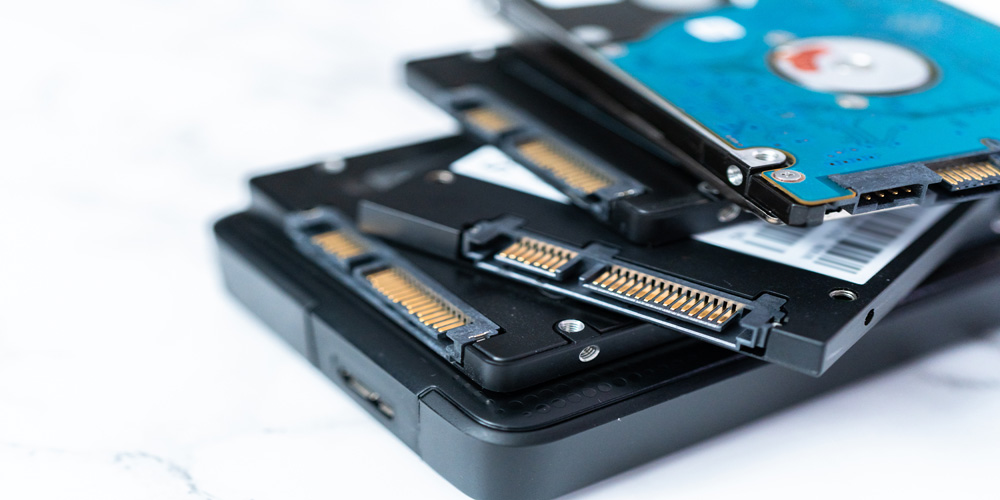Hard Drive Failure & S.M.A.R.T. Errors
Hard disk failure will eventually occur with every hard drive, but unlike other hardware components, mechanical disks usually give us some early warning of impending breakdown.
SMART technology can alert you of an impending hard disk failure with metrics that are specific, measurable, assignable, realistic, and time-related.
1. Uncorrectable Error
Error 535 typically results from hardware problems, such as an incompatible hard drive or bad RAM memory modules. Installing new drivers may provide relief or using Windows Update may reveal updates available to fix it.
If the hard drive has another copy of that data (e.g. a RAID array), it can rewrite that sector and stop reporting it as unreadable, eliminating these errors altogether. Without another copy, however, they will continue to occur and eventually lead to failure of the hard drive; according to BackBlaze data analysis software, a hard drive that reports several SMART 187 errors daily is more likely than one which reports few or none.
Error 51 can also indicate that your power supply isn’t providing enough voltage to the drive or that overclocking has gone too far – both can be tricky issues to resolve and are best avoided where possible; to do so in your UEFI or BIOS settings. In such a case, disable overclocking for best results if overclocking.
2. Bad Sectors
Gradually, hard disks may develop more and more bad sectors over time. When this number exceeds a predefined threshold value, S.M.A.R.T. will inform you and advise backing up data immediately. Bad sectors could be caused by either mechanical issues or just general wear-and-tear of hard drives and SSDs respectively.
However, it is possible that a bad sector only affects part of your drive and won’t result in its total failure. Therefore, it is crucial that you back up your data as soon as possible and replace any failing disk.
S.M.A.R.T attributes tend to have normalized values – higher numbers indicate improvement. However, certain critical attributes don’t have standard values and may never indicate any kind of failure; two such critical attributes for both HDDs and SSDs that don’t fit this mold include Current Pending Sector Count and Reallocated Sector Count which measure how often their drive logic has remapped an error-ridden sector back onto another physical sector from its spare ones as a result of repeated soft errors.
3. Read Error
This attribute logs the rate at which hardware read errors are recorded, enabling early identification of impending hard disk failure (crack on hard drive surface, broken read/write head, poor connection to electronics module, or handling damage). Furthermore, this parameter may show any unreadable sectors which are marked “pending”, suggesting unreadable data within those sectors.
This attribute indicates the raw value of suspected defective sectors not yet remapped from a device’s pool of serviceable sectors and offers candidates to be remapped during an off-line scan1 operation and back into serviceability.
It is one of the more crucial parameters, and any deviation from its normal value could signal imminent disk failure. Be sure to back up any essential data to a different medium as soon as possible and consider replacing the disk altogether.
4. Bad Sector Count
As soon as a hard drive’s Current Pending Sector Count starts to increase, it’s time to back up files and consider replacing the disk. This SMART error code indicates unstable sectors on the drive that need reallocating.
Bad sectors, or storage blocks that cannot read or write data, damage and corrupt any stored information that is located there. Over time, this can become irreparable damage to hard drives; so the Self-Monitoring, Analysis, and Reporting Technology (S.M.A.R.T) feature was introduced as a solution; designed to identify and address bad sectors before they cause major issues on hard drives.
The Current Pending Sector Count attribute from SMART represents an initial estimate of how many unstable sectors on your hard drive require remapping to healthy ones in order to function normally again. If this number continues to increase, this could be an indicator that your hard drive has begun deteriorating and could soon go RAW or even completely fail, potentially causing significant data loss.
5. Bad Sector Reporting
When the SMART error pops up, that signals your hard disk is nearing failure. To protect all of the information stored therein and ensure its safekeeping for later, backup all data immediately before replacing the hard drive as soon as possible.
Bad sector reporting detects and reports physically damaged sectors on a hard drive to the user, one of the most frequently occurring errors that may be due to overheating, power outages, or firmware errors.
EaseUS Data Recovery Wizard is an effective utility designed to fix SMART errors and recover data from hard drives. After downloading and installing, select the hard disk that you would like to check SMART health status on, click “Check”, and this tool will display its current state as well as any solid state drives (SSDs) present on that hard disk if they exist.
